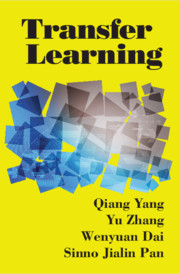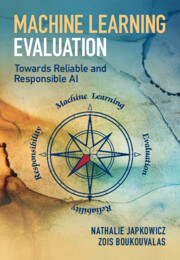Transfer Learning
Transfer learning deals with how systems can quickly adapt themselves to new situations, tasks and environments. It gives machine learning systems the ability to leverage auxiliary data and models to help solve target problems when there is only a small amount of data available. This makes such systems more reliable and robust, keeping the machine learning model faced with unforeseeable changes from deviating too much from expected performance. At an enterprise level, transfer learning allows knowledge to be reused so experience gained once can be repeatedly applied to the real world. For example, a pre-trained model that takes account of user privacy can be downloaded and adapted at the edge of a computer network. This self-contained, comprehensive reference text describes the standard algorithms and demonstrates how these are used in different transfer learning paradigms. It offers a solid grounding for newcomers as well as new insights for seasoned researchers and developers.
- Distinguished authors who are pioneers of transfer learning research and practice.
- This is the first book on this important subfield of machine learning and artificial intelligence
- Featured applications include multimedia, Web search, text mining, sentiment analysis, cyber-physical systems, inference on social networks, and collaborative recommendation
Reviews & endorsements
'Transfer learning is a critically important approach in settings where data is sparse or expensive. This comprehensive text focuses on when to transfer, what to transfer, and how to transfer previously learned knowledge into a novel current task. The authors cover historic methods as well as very recent methods, classifying them into a comprehensive ontology of transfer learning methods. Through its coverage of basic methods, advanced methods, and multiple application domains, the text will provide a useful guide to both novice and the experienced researchers and practitioners.' Matthew E. Taylor, Principal Researcher at Borealis AI, Edmonton
'This book offers a comprehensive overview of the field, arguing the case for adaptation as key to mimicking human intelligence … The book includes a substantial bibliography documenting copious citations to the literature. There appear to be few other textbooks in this field apart from this unique work. As such, it will be welcomed by libraries supporting strong computer science programs that may have need for a core text in artificial intelligence.' D. Z. Spicer, Choice
Product details
February 2020Adobe eBook Reader
9781108860086
0 pages
143 b/w illus.
This ISBN is for an eBook version which is distributed on our behalf by a third party.
Table of Contents
- 1. Introduction
- 2. Instance-based transfer learning
- 3. Feature-based transfer learning
- 4. Model-based transfer learning
- 5. Relation-based transfer learning
- 6. Heterogeneous transfer learning
- 7. Adversarial transfer learning
- 8. Transfer learning in reinforcement learning
- 9 Multi-task learning
- 10. Transfer learning theory
- 11. Transitive transfer learning
- 12. AutoTL: learning to transfer automatically
- 13. Few-shot learning
- 14. Lifelong machine learning
- 15. Privacy-preserving transfer learning
- 16. Transfer learning in computer vision
- 17. Transfer learning in natural language processing
- 18. Transfer learning in dialogue systems
- 19. Transfer learning in recommender systems
- 20. Transfer learning in bioinformatics
- 21. Transfer learning in activity recognition
- 22. Transfer learning in urban computing
- 23. Concluding remarks.




